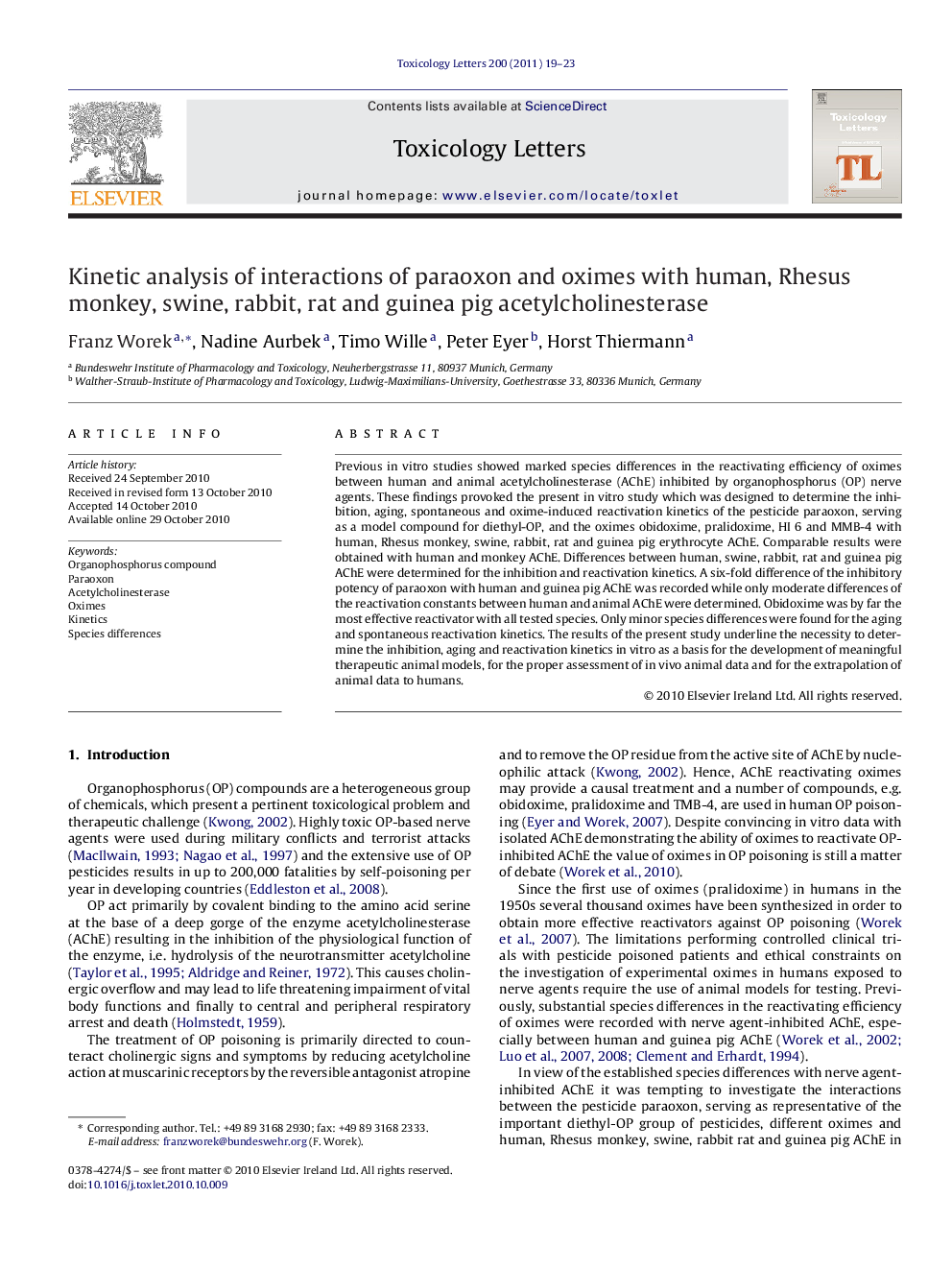| Article ID | Journal | Published Year | Pages | File Type |
|---|---|---|---|---|
| 2600009 | Toxicology Letters | 2011 | 5 Pages |
Previous in vitro studies showed marked species differences in the reactivating efficiency of oximes between human and animal acetylcholinesterase (AChE) inhibited by organophosphorus (OP) nerve agents. These findings provoked the present in vitro study which was designed to determine the inhibition, aging, spontaneous and oxime-induced reactivation kinetics of the pesticide paraoxon, serving as a model compound for diethyl-OP, and the oximes obidoxime, pralidoxime, HI 6 and MMB-4 with human, Rhesus monkey, swine, rabbit, rat and guinea pig erythrocyte AChE. Comparable results were obtained with human and monkey AChE. Differences between human, swine, rabbit, rat and guinea pig AChE were determined for the inhibition and reactivation kinetics. A six-fold difference of the inhibitory potency of paraoxon with human and guinea pig AChE was recorded while only moderate differences of the reactivation constants between human and animal AChE were determined. Obidoxime was by far the most effective reactivator with all tested species. Only minor species differences were found for the aging and spontaneous reactivation kinetics. The results of the present study underline the necessity to determine the inhibition, aging and reactivation kinetics in vitro as a basis for the development of meaningful therapeutic animal models, for the proper assessment of in vivo animal data and for the extrapolation of animal data to humans.
